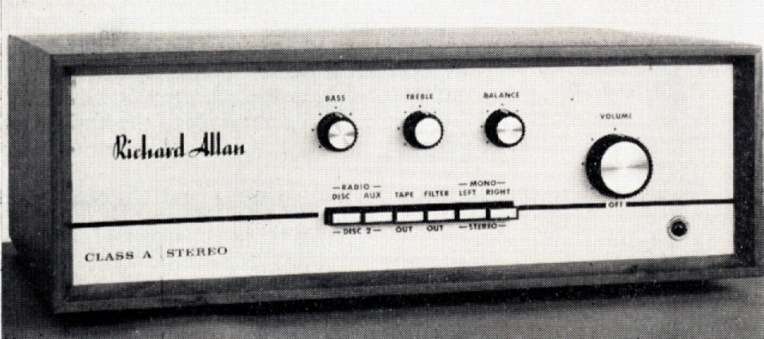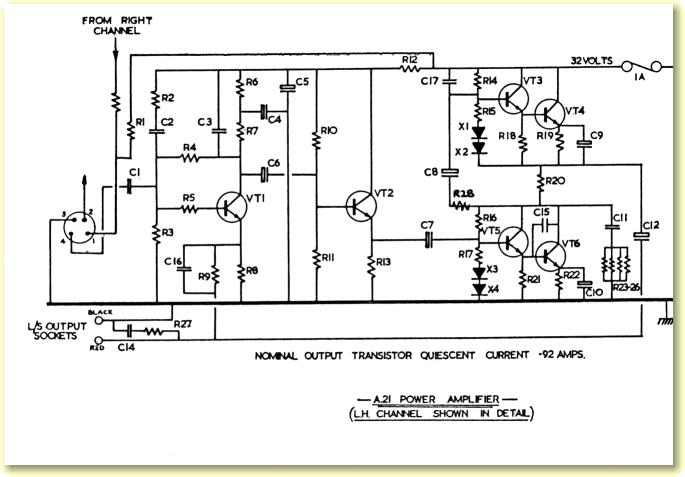


| “Richard Allan: Celebrating their 21st Birthday this April, Richard Allan offer one of the Show’s most interesting departures by entering the amplifier field with two Class-A transistor systems. Designer behind this project is James Sugden, known to readers through his various articles on the subject.” |
| Max o/p Power into 6 Ohms | 10 Watts |
| THD at 7·5 Watts | 0·25% |
| THD at 1 Watt | less than 0·03% |
| Frequency and Power Response +/- 1dB | 20Hz - 20kHz +/- |
| Output to Tape Recorder | 200 mV |
| Input sensitivity: Radio / Tape / Aux inputs | 200mV 250 kOhms |
| Disc 1: Magnetic Cartridge input (RIAA) | 3·5mV into 70 kOhms |
| Disc 2: Ceramic Cartridge (Flat) | 50mV into 1MOhm+470pF |
| Overload capability | 20 dB on Disc |
| Noise (30 phon weighting) 200mV inputs | -80dB |
| Noise (30 phon weighting) Disc 1 | -70dB |
| Noise (30 phon weighting) Disc 2 | -65dB |
| Rumble Filter (built into RIAA) | 12dB per Oct below 45Hz |
| Bass Control | +/- 16dB at 40Hz |
| Treble Control | +/- 12dB at 10kHz |
| HF Filter | 12dB per Oct above 7kHz |
| Power Consumption | 60 Watts |
| Size | 394 x 127 x 229 mm |
| Weight | 11·3 Kg |


| Maximum output power into 15 Ohms | 20 W rms |
| THD at 15 W | less than 0·1% |
| THD at 1 W | less than 0·01% |
| Frequency response +/- 0·5dB | 20Hz - 20kHz |
| Power response at 20 W | -1dB at 20Hz |
| Input sensitivity | 500 mV into 200k |
| Noise rel 15W output (10k source) | -90dB |
| Rise Time | 5 microsec |
| Output Impedance | 0·25 Ohm |
| Load Stability | Unconditional |
| Power Consumption | 100 W |
| Size | 843 x 216 x 254 mm |
| Weight | 10 Kg |
| “Richard Allan. The A21 and A41 Class-A transistor amplifiers caused a considerable - and perhaps predictable – flurry of technical interest; in fact this comprised one of the few genuine new developments of the Festival. Sound produced were certainly extremely clean and easy...” |
